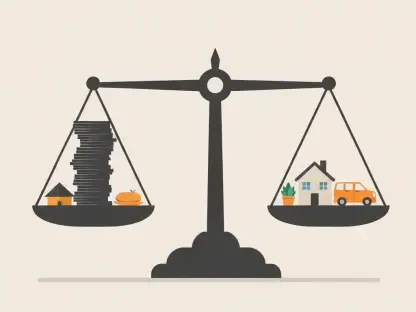The banking-as-a-service (BaaS) industry has experienced a rollercoaster of regulatory scrutiny and market dynamics over the past few years. A year ago, the future of BaaS seemed uncertain due to significant regulatory pressures. However, as we look ahead to 2025, the outlook appears much more promising.
The Regulatory Landscape: A Year in Review
Initial Regulatory Pressures and Challenges
In early 2024, the BaaS industry faced a wave of enforcement actions targeting banks involved in BaaS. This period of intense regulatory scrutiny raised doubts about the viability of the BaaS model. Banks, fintechs, and regulators grappled with understanding the complexities of BaaS, which allows nonbank companies to offer banking products through partnerships with chartered lenders. Faced with this uncertainty, many stakeholders were unsure how to proceed, and the regulatory environment seemed poised to stifle innovation in the sector.
The regulatory challenges faced by BaaS providers included compliance with laws designed for traditional banking models. These regulations were often ill-suited to accommodate BaaS collaborations, resulting in a murky and often conflicting regulatory framework. This lack of clarity caused frustration among fintech innovators who were eager to push forward with new products and services. The skepticism surrounding BaaS’s ability to operate within the existing legal structures further complicated the industry’s prospects.
Evolving Understanding and Education
Over the past year, the situation has improved significantly. Increased understanding and education among stakeholders have contributed to a more stable regulatory environment. The initial regulatory challenges have paved the way for a more informed approach to BaaS, fostering a better relationship between banks and fintechs. As banks, fintechs, and regulators have all become more familiar with the intricacies of the BaaS model, the industry has started to gain traction and find its footing within the broader financial ecosystem.
Furthermore, the collaborative efforts between various stakeholders have facilitated a more unified vision of what BaaS can offer. Industry conferences, workshops, and ongoing dialogues helped bridge the knowledge gap, allowing for a shared understanding that BaaS can coexist alongside traditional banking models while bringing innovative solutions to the market. This evolving comprehension has not only reassured existing players but also attracted new entrants who see the potential to offer cutting-edge financial services through BaaS partnerships.
Anticipated Shifts in Regulatory Attitudes
Political Administration Changes
A critical factor contributing to the improved outlook is the anticipated shift in regulatory attitudes brought on by changes in the political administration. Analysts, including Konrad Alt from Klaros Group, predict that the new administration will adopt a less aggressive stance, creating a more conducive environment for BaaS growth. While specific policies remain to be seen, there is optimism that the incoming regulators will be more open to innovative financial models and less likely to impose restrictive measures that could hinder the industry’s development.
The potential for a more favorable regulatory climate is supported by a broader trend towards technology-friendly policies. Recognizing the importance of digital transformation in maintaining global competitiveness, the new administration may prioritize frameworks that encourage fintech innovation while ensuring consumer protection. This shift could result in more balanced regulations that enable growth without sacrificing regulatory oversight, ultimately benefiting the BaaS industry and its stakeholders.
Decreased Pace of Enforcement Actions
Another reason for the decreased pace of enforcement actions is the exhaustion of viable targets. With around 150 banks offering BaaS services and numerous enforcement actions already issued, fewer banks remain for future regulatory actions. This has led to an expectation of a less turbulent regulatory environment moving forward. As regulators run out of targets and gain a better understanding of the BaaS landscape, the focus is likely to shift towards maintaining compliance through guidance rather than punitive measures.
The reduction in enforcement actions provides an opportunity for banks and fintechs to operate with greater confidence. Knowing that the regulatory spotlight is less intense, these entities can channel more resources towards innovation and strategic growth. This decreased pressure does not imply a complete absence of oversight but rather a more balanced approach where regulators work with the industry to ensure ethical practices and compliance without stifling progress.
The Impact of Past Enforcement Actions
Targeting Weak Programs and Bad Actors
Analysts, such as James Stevens from Troutman Pepper, suggest that previous regulatory efforts targeted weak programs and bad actors within the BaaS sector. Many of these enforcement actions are still in process, but the groundwork laid has positioned the BaaS ecosystem for future growth. By addressing the issues posed by inadequate compliance protocols and unscrupulous actors, regulators have helped to create a more robust and trustworthy BaaS environment.
The focus on eliminating weak programs and bad actors has also instilled a culture of accountability and best practices within the BaaS industry. Banks and fintechs that survived the regulatory sweeps are now more diligent in their compliance efforts, ensuring that their operations align with legal requirements. This heightened sense of responsibility has not only improved the reputation of BaaS but also attracted stakeholders who value transparency and ethical business conduct.
Lessons Learned and Future Growth
Banks not encumbered by enforcement actions are expected to increase their BaaS efforts, leveraging the lessons learned from past examinations and regulatory experiences. This newfound expertise will help banks navigate the complexities of BaaS more effectively. Having observed the pitfalls experienced by their counterparts, these banks are better positioned to implement robust compliance frameworks, minimizing the risk of regulatory violations.
Despite the improved outlook, enforcement actions will not disappear entirely. Regulatory scrutiny will persist, albeit at a reduced and more manageable level. Banks involved in BaaS will still need to address substantial compliance and operational challenges, particularly smaller banks with limited resources. Ensuring ongoing compliance requires a commitment to continuous improvement and staying abreast of evolving regulatory expectations.
Persistent Compliance and Operational Challenges
Banks engaged in BaaS must remain vigilant in addressing compliance and operational challenges. Smaller banks, in particular, may find it challenging to allocate the necessary resources for comprehensive compliance efforts. This could include hiring specialized compliance personnel, implementing advanced monitoring systems, and conducting frequent audits. Nevertheless, a proactive approach to compliance will be essential in maintaining the trust of regulators and consumers alike.
State financial regulators may also play a significant role in the future of BaaS. They have the authority to step in and address issues that they believe are not being adequately managed by federal counterparts. This nuanced interaction between state and federal regulators ensures that compliance and accountability are maintained at both national and local levels. The collaborative efforts of these regulatory bodies will be crucial in fostering a stable and compliant BaaS ecosystem.
Proactive Regulatory Frameworks
FDIC Vice Chair’s Perspective
FDIC Vice Chair Travis Hill highlights the potential for a regulatory approach that prioritizes clear and transparent guidelines over post-occurrence enforcement. A proactive regulatory framework could help the industry better align its compliance strategies, reducing the need for sequential enforcement actions. By setting out clear expectations and guidelines from the outset, regulators can assist BaaS providers in maintaining compliance and avoiding the missteps that lead to enforcement actions.
A proactive framework would also encourage innovation by providing a degree of regulatory certainty. When banks and fintechs are confident in their understanding of the regulatory landscape, they are more likely to invest in new technologies and services. This regulatory certainty not only spurs growth but also fosters a competitive environment where firms can differentiate themselves through unique offerings while still adhering to legal requirements.
Balancing Exits and New Entrants
The mixed responses from banks towards BaaS reflect the realization that managing the associated risks requires significant expertise and resources. While some banks, such as Five Star Bank in New York, have exited the BaaS space, others are considering entry. This divergence is expected to balance the departure trend, with new entrants, including de novo banks and traditional banks undergoing changes in control, joining the market. The appeal of BaaS lies in its potential to offer a diverse array of financial products through innovative partnerships, attracting new players eager to capitalize on these opportunities.
New entrants bring fresh perspectives and capabilities, further enriching the BaaS ecosystem. These banks, equipped with the latest technological advancements and a keen understanding of the current regulatory landscape, are poised to contribute to the industry’s growth. By learning from the experiences of their predecessors, these new players can navigate BaaS with greater agility and resilience, driving the evolution of financial services.
The Road Ahead for BaaS
Weathering Regulatory Scrutiny
The BaaS industry has weathered a period of intense regulatory scrutiny and growing pains. The outlook moving forward is brighter, supported by improved regulatory understanding, a potentially less hostile political environment, and a more experienced and prepared banking sector. The foundational work done to address past compliance challenges has set the stage for a more stable and sustainable BaaS market.
Despite the challenges, the industry has demonstrated resilience and adaptability. Banks and fintechs have shown a willingness to learn and evolve, responding to regulatory demands while continuing to innovate. This adaptability is a critical asset that will serve the BaaS industry well as it moves forward into a phase of more balanced growth.
Opportunities and Challenges
The banking-as-a-service (BaaS) sector has been on quite a tumultuous ride, affected by extensive regulatory scrutiny and evolving market dynamics over recent years. About a year ago, the future of BaaS appeared quite uncertain, primarily due to these considerable regulatory pressures which cast doubt on the industry’s stability and growth potential.
However, fast forward to the present, as we look ahead to the year 2025, the prospects for BaaS appear to be significantly brighter. The regulatory landscape has begun to stabilize, allowing companies within the industry to better navigate compliance requirements. This newfound stability has encouraged further innovation and investment within the sector, fostering growth and development.
Furthermore, consumer demand for digital banking solutions continues to rise, pushing traditional banks and fintech companies to collaborate and explore BaaS opportunities. As a result, the BaaS industry is poised to flourish, supported by both technological advancements and a more predictable regulatory environment, ensuring a promising future.









